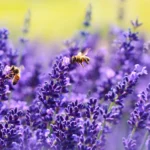- 0 Comments
- admin
What are the types of Honey Out there?

The number of types of honey worldwide can be quite extensive, as it depends on various factors such as the floral source, geographical location, and processing methods. Here are some general categories of honey:
Monofloral Honey: This type of honey is produced predominantly from the nectar of a single type of flower. Examples include Manuka honey from New Zealand, acacia honey from the acacia tree, and lavender honey from lavender flowers.
Polyfloral Honey: Also known as wildflower honey, polyfloral honey comes from the nectar of multiple flower types. Its flavor and color can vary depending on the mix of flowers available to the bees. Wildflower honey is a common type found in many regions.
Raw Honey: Raw honey is honey that has not been heated or pasteurized, preserving its natural enzymes, antioxidants, and other beneficial compounds. It may come from a variety of floral sources.
Filtered Honey: Filtered honey has been processed to remove impurities such as pollen particles and air bubbles, resulting in a smoother texture and clearer appearance. However, filtering may also remove some of the honey’s nutritional benefits.
Creamed or whipped honey: This type of honey has been processed to control crystallization, resulting in a smooth, spreadable texture. It is often used as a spread on bread or toast.
Comb Honey: Comb honey is honey that is still in the beeswax comb, providing a unique and unprocessed way to enjoy honey.
The exact number of honey varieties worldwide is challenging to determine due to the vast diversity of floral sources and regional variations. Additionally, local traditions and practices may lead to specific types of honey unique to certain cultures or regions.
How is Honey Processed?
Honey processing involves several steps to extract, filter, and bottle the honey while preserving its quality. Here’s an overview of the typical honey processing process:
Extraction: The first step in honey processing is extracting honey from the honeycomb. Beekeepers use a specialized tool called a honey extractor to remove honey from the frames of the hive. The frames are placed inside the extractor, which spins them rapidly, causing the honey to be flung out of the comb by centrifugal force.
Uncapping: Before honey can be extracted, the wax caps covering the honeycomb cells must be removed. This process is called uncapping and is typically done using a heated knife or an uncapping fork. The uncapped frames are then placed in the honey extractor for extraction.
Filtering and Straining: Once the honey has been extracted from the frames, it may contain bits of wax, bee parts, or other debris. To remove these impurities, the honey is filtered or strained. Filtering involves passing the honey through a fine mesh or cloth filter to remove larger particles, while straining involves using a coarser filter to remove smaller particles.
Settling: After filtering or straining, the honey is allowed to settle in a holding tank or settling tank. This allows any air bubbles or foam to rise to the surface and be removed, resulting in clearer honey.
Bottling: Once the honey has settled, it is ready to be bottled. Beekeepers may choose to bottle honey in various sizes and types of containers, such as jars, squeeze bottles, or bears. Before bottling, the honey may be gently warmed to make it easier to pour and bottle. Some beekeepers may also choose to add labels or seals to the bottles before they are distributed.
Storage: Finally, the bottled honey is stored in a dry, cool place away from direct sunlight. Proper storage helps maintain the quality and flavor of the honey.
Throughout the processing process, it’s essential to handle honey gently and avoid exposing it to high temperatures or excessive agitation, as this can degrade its quality and affect its flavor and nutritional properties.
The ideal temperature for processing honey depends on the specific stage of processing and personal preferences. Here are some temperature guidelines for various stages of honey processing:
Extracting: When extracting honey from the hive frames, it’s beneficial to keep the temperature relatively low to minimize the risk of overheating and damaging the honey’s natural enzymes and flavor. A temperature range of around 30°C to 35°C (86°F to 95°F) is commonly recommended during extraction.
Filtering and Straining: After extraction, honey may be filtered or strained to remove any debris or impurities. Again, it’s best to keep the temperature relatively low to preserve the honey’s quality. A temperature range similar to that used during extraction is suitable for this stage.
Settling: Allowing the honey to settle after extraction can help remove air bubbles and improve its clarity. The settling process typically occurs at room temperature, which can vary but is often around 20°C to 25°C (68°F to 77°F).
Bottling: When bottling honey, it’s essential to ensure that it is at a temperature where it flows easily but not so warm that it causes excessive crystallization. A slightly warmer temperature, around 30°C to 35°C (86°F to 95°F), may be suitable for bottling if the honey has become too viscous.
Storage: Once bottled, honey should be stored at room temperature, ideally between 18°C to 25°C (64°F to 77°F), in a dry place away from direct sunlight. Storing honey at higher temperatures can accelerate crystallization, while storing it at lower temperatures can slow down crystallization but may also cause it to thicken and become less pourable.
Overall, it’s essential to handle honey gently and avoid exposing it to high temperatures that can degrade its quality. Keeping temperatures within the ranges mentioned above helps preserve the natural enzymes, flavor, and nutritional benefits of honey.

